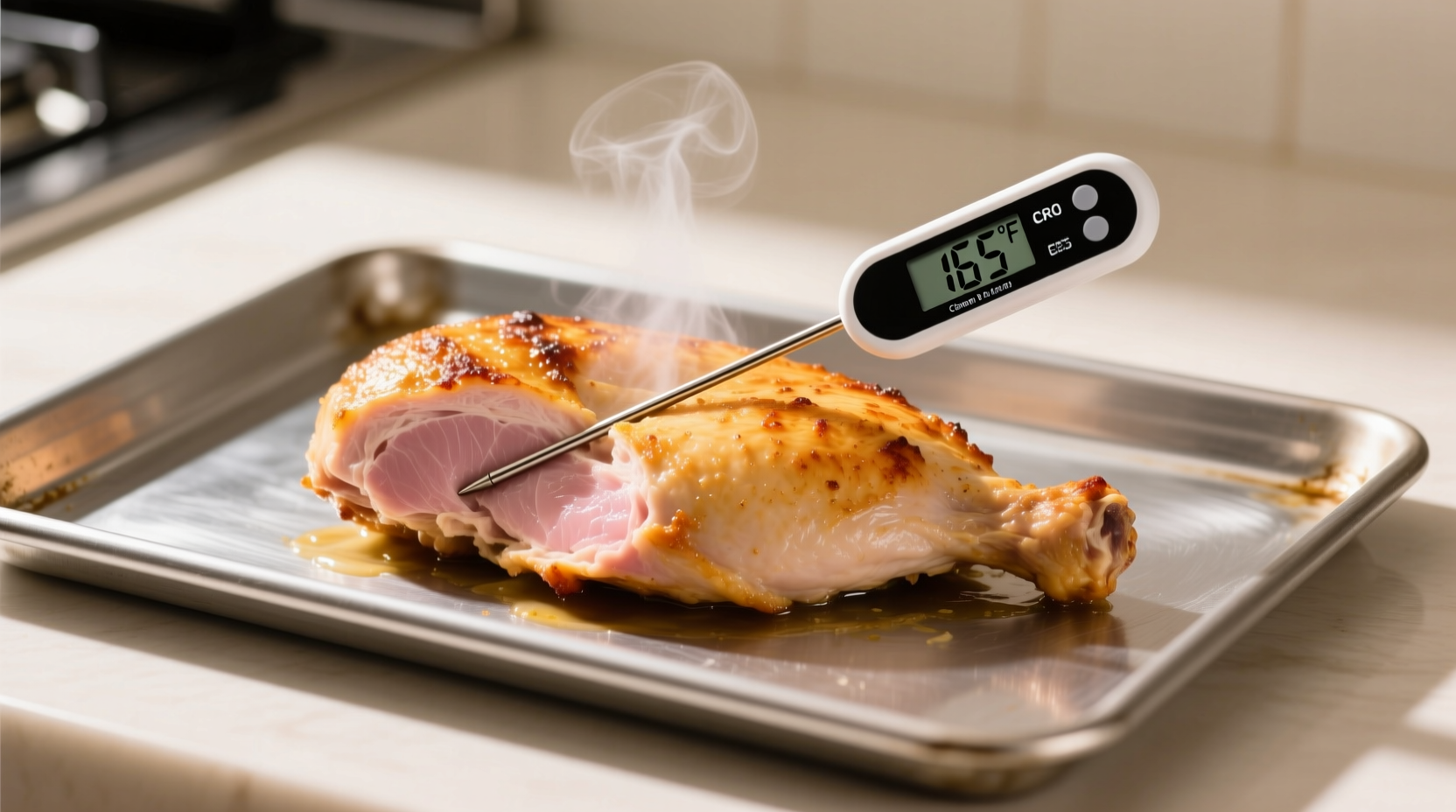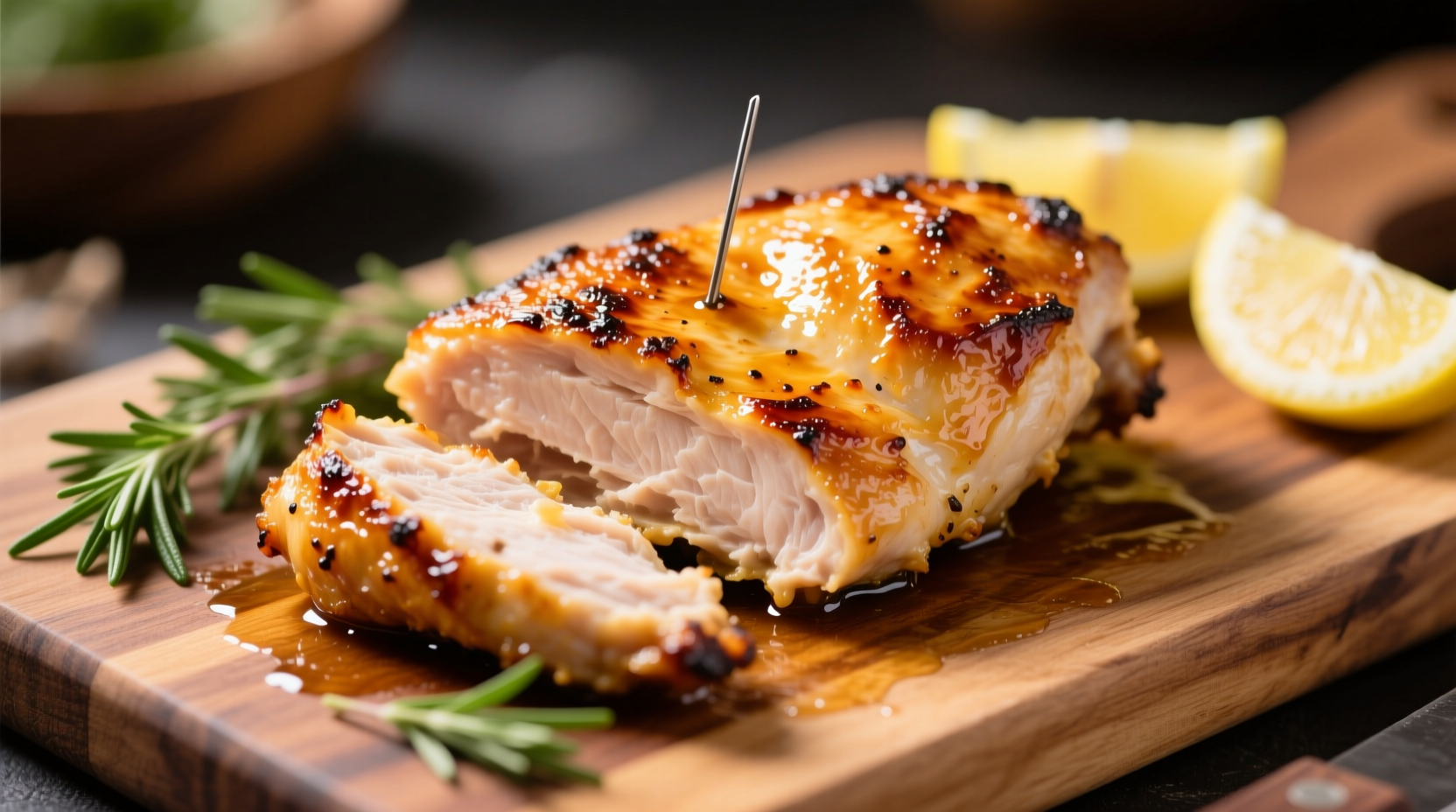The perfect oven temperature for cooking chicken breast is 400°F (204°C), with an internal temperature target of 165°F (74°C) for safe, juicy results. This high-heat method typically takes 20-25 minutes, creating a flavorful crust while preventing dryness through controlled carryover cooking.
Why Oven Temperature Matters for Chicken Breast
Getting chicken breast temperature right isn't just about food safety—it's the difference between succulent, flavorful meat and dry, rubbery disappointment. While the USDA mandates a minimum internal temperature of 165°F (74°C) for poultry safety, the oven temperature you choose dramatically impacts texture, cooking time, and overall quality.

Your Oven Temperature Options Compared
Different oven temperatures create different cooking dynamics. Understanding these helps you choose the right method for your situation:
| Oven Temperature | Cooking Time | Best For | Texture Result |
|---|---|---|---|
| 350°F (177°C) | 25-30 minutes | Beginners, thicker cuts | Risk of dryness, less browning |
| 375°F (191°C) | 22-27 minutes | Standard preparation | Good balance, moderate browning |
| 400°F (204°C) | 20-25 minutes | Most reliable results | Optimal juiciness, golden crust |
| 425°F (218°C) | 18-22 minutes | Thin cuts, quick meals | Rapid browning, requires close monitoring |
Research from the USDA Food Safety and Inspection Service confirms that properly reaching 165°F internal temperature eliminates harmful bacteria like salmonella. However, professional kitchen testing shows that cooking chicken breast at higher oven temperatures (400°F+) creates a better moisture seal through the Maillard reaction, locking in juices more effectively than lower temperatures.
The Step-by-Step Perfect Chicken Breast Method
Preparation Phase: Setting Up for Success
Begin with properly prepared chicken breast for optimal results:
- Remove chicken from refrigerator 20-30 minutes before cooking to reduce temperature shock
- Pat dry thoroughly with paper towels—moisture is the enemy of browning
- Season generously with salt (and preferred spices) at least 15 minutes before cooking
- Consider light oil coating (1 tsp per breast) to enhance browning
Cooking Execution: The Critical Window
Follow these precise steps during cooking:
- Preheat oven to 400°F (204°C) with rack in center position
- Place chicken on lightly greased baking sheet or oven-safe skillet
- Cook undisturbed for 15 minutes (critical for proper searing)
- Check internal temperature at thickest part using instant-read thermometer
- Continue cooking in 2-minute increments until reaching 160°F (71°C)
- Remove from oven—carryover cooking will bring it to safe 165°F (74°C)
Food science research from Serious Eats demonstrates that removing chicken at 160°F allows residual heat to safely bring it to 165°F during the essential 5-8 minute resting period, preventing overcooking.
Troubleshooting Common Problems
Even with perfect temperature settings, issues can arise. Here's how to fix them:
Dry or Tough Chicken
This typically happens when oven temperature is too low (below 375°F) causing prolonged cooking time. Solution: Increase oven temperature to 400°F+ and reduce cooking time. Consider brining chicken in 1/4 cup salt dissolved in 4 cups water for 30 minutes before cooking to improve moisture retention.
Uneven Cooking
When one side cooks faster than the other, it's often due to inconsistent thickness. Professional kitchens solve this by butterflying thicker chicken breasts to create uniform 1-inch thickness throughout. Place the chicken flat-side down on your cutting board and slice horizontally through the thickest part.
Undercooked Center
If your chicken breast registers below 165°F internally but the exterior is over-browning, reduce oven temperature to 350°F and continue cooking while monitoring closely. Alternatively, finish under the broiler for 1-2 minutes if needed.
Advanced Techniques for Restaurant-Quality Results
The Thermometer Advantage
While timing charts are helpful, an instant-read thermometer is the only reliable way to determine doneness. The CDC Food Safety guidelines emphasize that visual cues alone cannot guarantee poultry safety. Invest in a quality thermometer that reads in 3-5 seconds for precise monitoring without losing oven heat.
Carryover Cooking Explained
Understanding residual heat is crucial for perfect chicken. When removed from the oven, chicken continues cooking as heat transfers from the exterior to the center. This phenomenon, called carryover cooking, typically raises internal temperature by 5°F. Always remove chicken at 160°F to reach the safe 165°F during the mandatory resting period.
Resting: The Secret Step Everyone Skips
Resting for 5-8 minutes after cooking allows juices to redistribute throughout the meat. Cutting too soon releases precious moisture onto your cutting board. During this time, cover loosely with foil to maintain temperature without steaming the surface.











 浙公网安备
33010002000092号
浙公网安备
33010002000092号 浙B2-20120091-4
浙B2-20120091-4